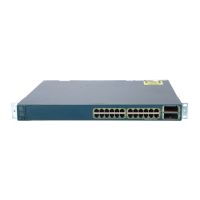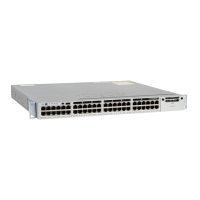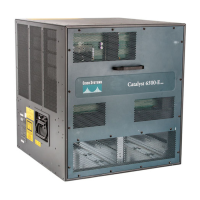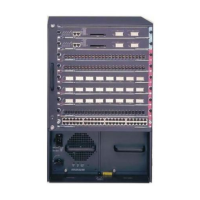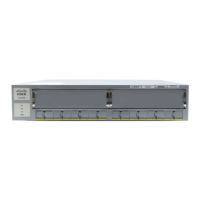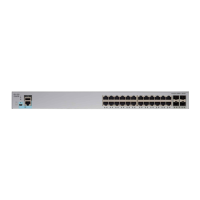15-10
Catalyst 3560 Switch Software Configuration Guide
78-16156-01
Chapter 15 Configuring STP
Understanding Spanning-Tree Features
Spanning-Tree Interoperability and Backward Compatibility
Table 15-2 lists the interoperability and compatibility among the supported spanning-tree modes in a
network.
In a mixed MSTP and PVST+ network, the common spanning-tree (CST) root must be inside the MST
backbone, and a PVST+ switch cannot connect to multiple MST regions.
When a network contains switches running rapid PVST+ and switches running PVST+, we recommend
that the rapid-PVST+ switches and PVST+ switches be configured for different spanning-tree instances.
In the rapid-PVST+ spanning-tree instances, the root switch must be a rapid-PVST+ switch. In the
PVST+ instances, the root switch must be a PVST+ switch. The PVST+ switches should be at the edge
of the network.
STP and IEEE 802.1Q Trunks
The IEEE 802.1Q standard for VLAN trunks imposes some limitations on the spanning-tree strategy for
a network. The standard requires only one spanning-tree instance for all VLANs allowed on the trunks.
However, in a network of Cisco switches connected through 802.1Q trunks, the switches maintain one
spanning-tree instance for each VLAN allowed on the trunks.
When you connect a Cisco switch to a non-Cisco device through an 802.1Q trunk, the Cisco switch uses
PVST+ to provide spanning-tree interoperability. If rapid PVST+ is enabled, the switch uses it instead
of PVST+. The switch combines the spanning-tree instance of the 802.1Q VLAN of the trunk with the
spanning-tree instance of the non-Cisco 802.1Q switch.
However, all PVST+ or rapid-PVST+ information is maintained by Cisco switches separated by a cloud
of non-Cisco 802.1Q switches. The non-Cisco 802.1Q cloud separating the Cisco switches is treated as
a single trunk link between the switches.
PVST+ is automatically enabled on 802.1Q trunks, and no user configuration is required. The external
spanning-tree behavior on access ports and Inter-Switch Link (ISL) trunk ports is not affected by
PVST+.
For more information on 802.1Q trunks, see Chapter 12, “Configuring VLANs.”
Table 15-2 PVST+, MSTP, and Rapid-PVST+ Interoperability
PVST+ MSTP Rapid PVST+
PVST+ Yes Yes (with restrictions) Yes (reverts to PVST+)
MSTP Yes (with restrictions) Yes Yes (reverts to PVST+)
Rapid PVST+ Yes (reverts to PVST+) Yes (reverts to PVST+) Yes
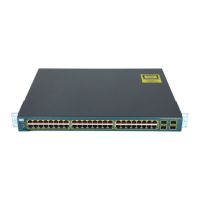
